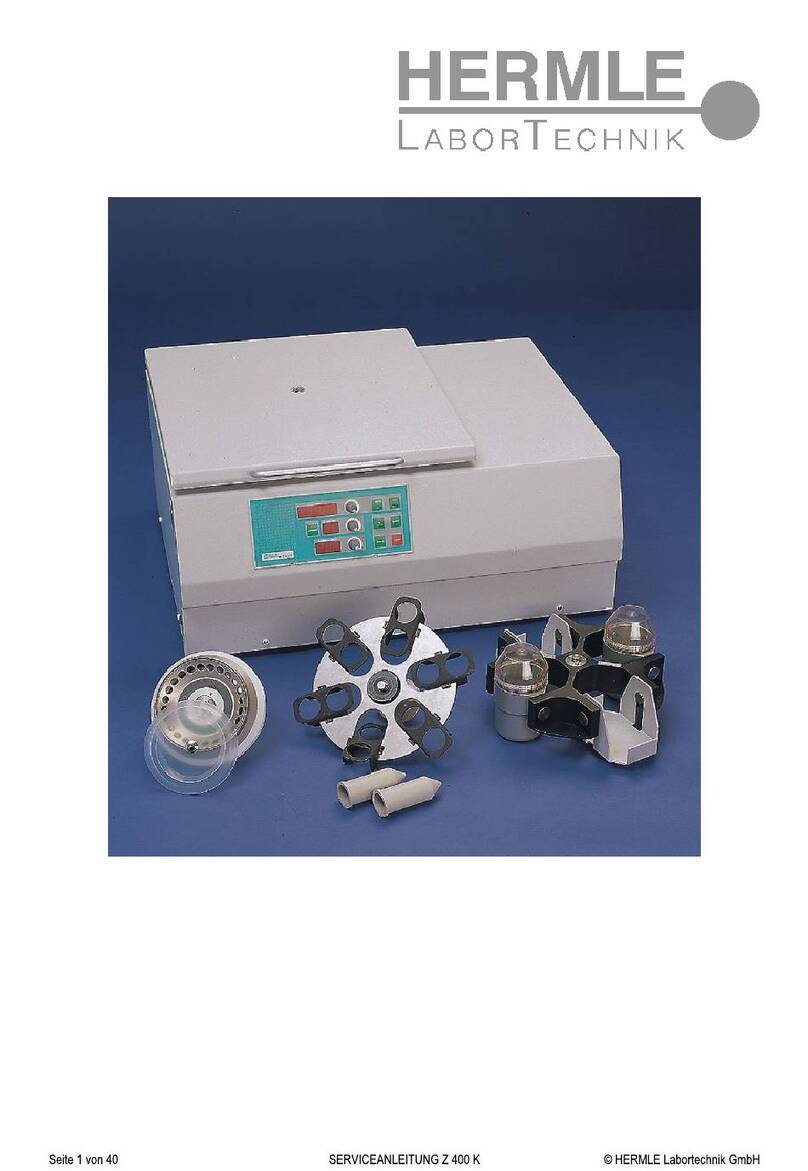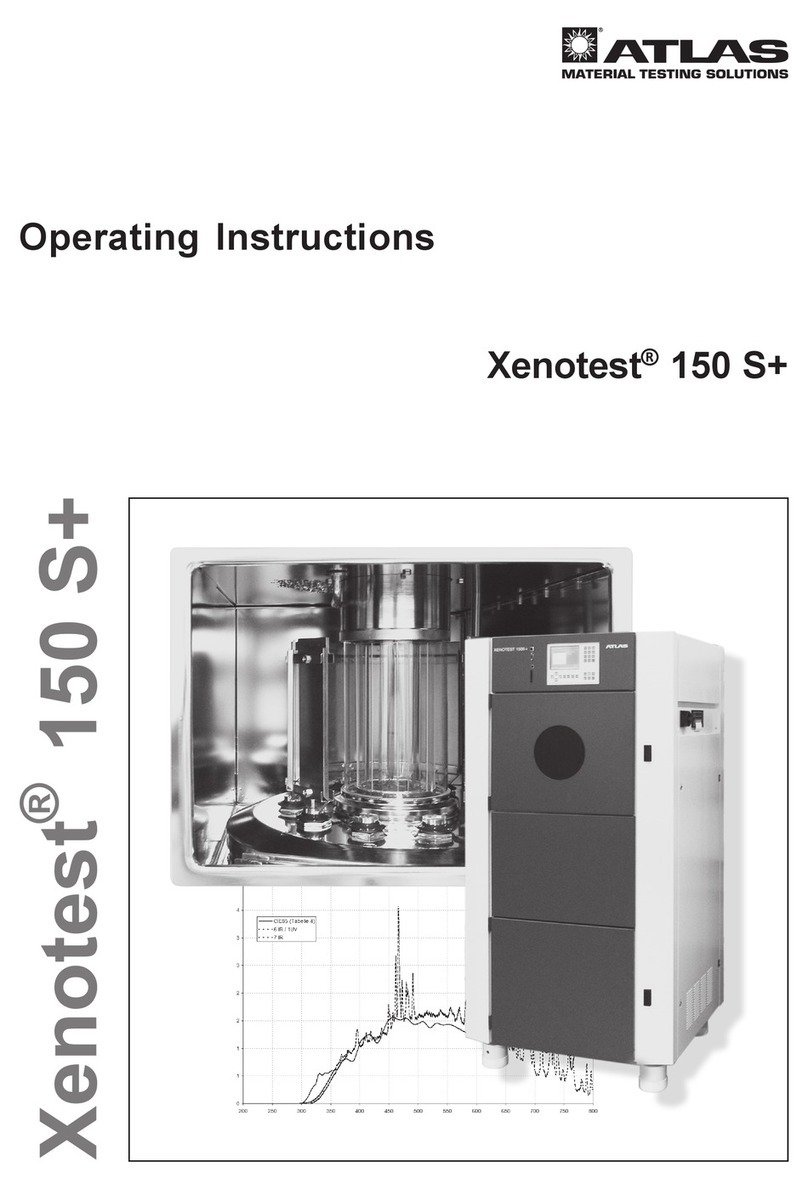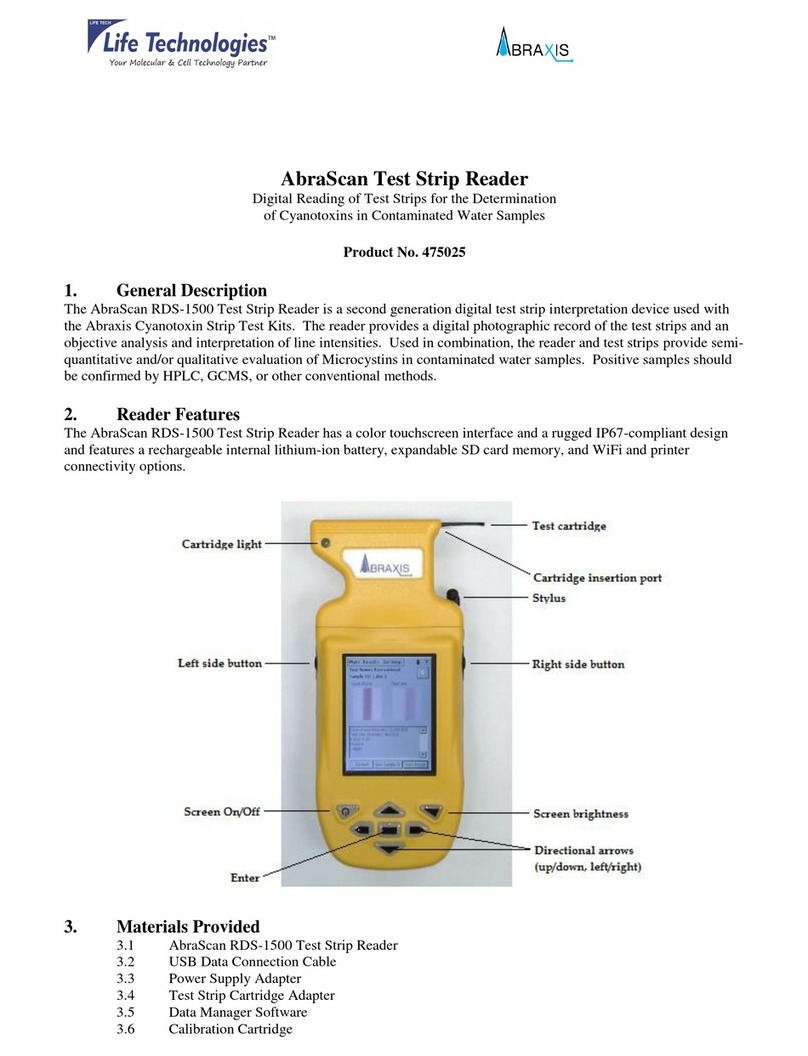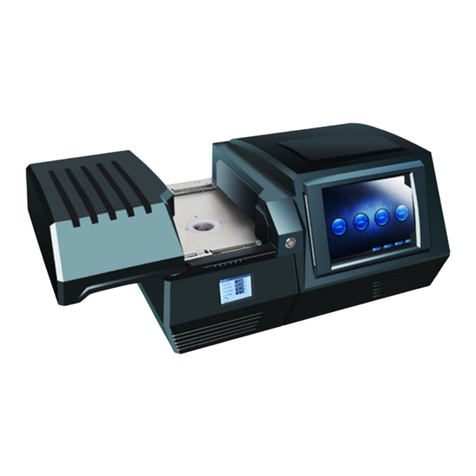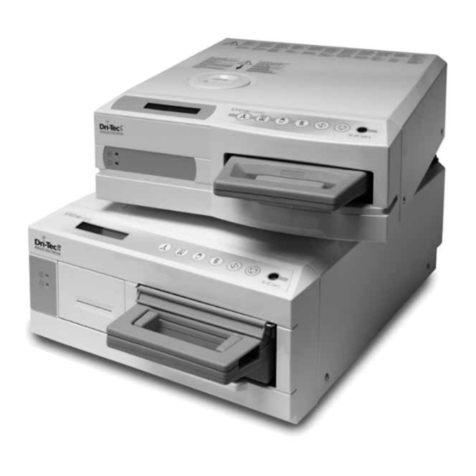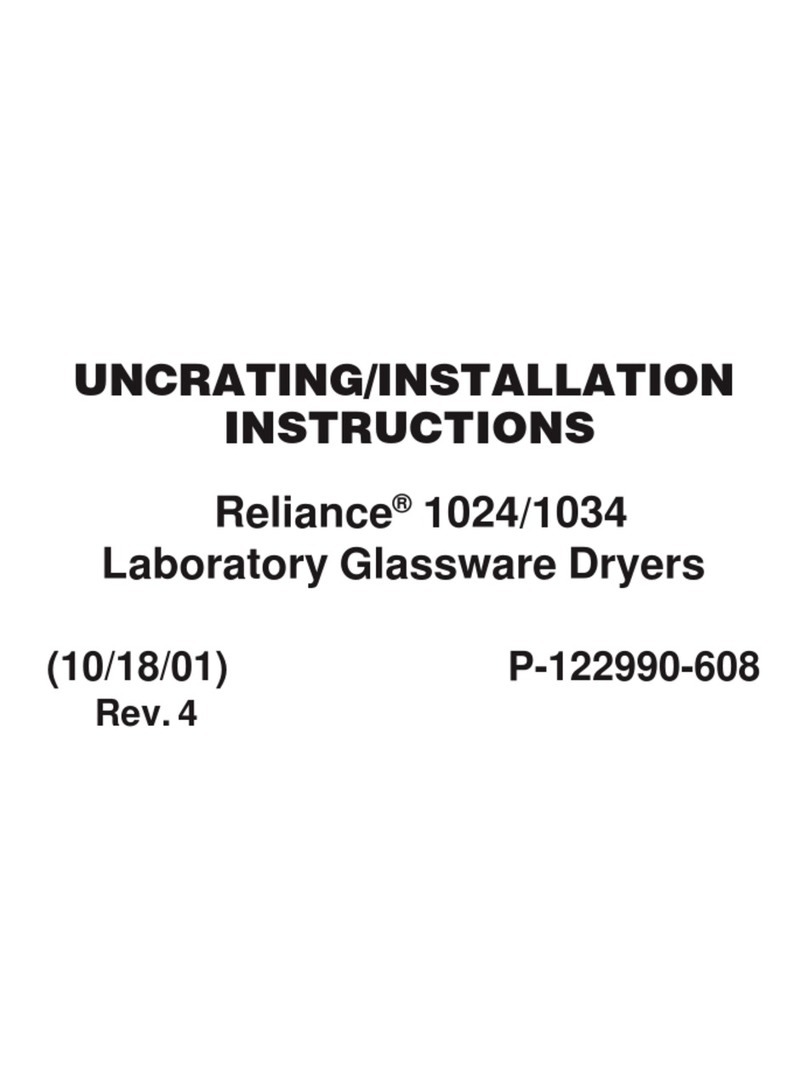Gordon Kapes 930 E1 User manual

System 930 E1 Version Reference Document
Covers topics including Euro ISDN and SIG
© 2001 by Gordon Kapes, Inc.
all rights reserved
5520 West Touhy venue
Skokie, Illinois 60077 U.S. .
Telephone 847|676-1750
Fax 847|982-0747
www.gkinc.com
40682, Issue 7
March 2001

System 930 E1 Version Reference Document Issue 7, March 2001
Gordon Kapes, Inc. Page 2
The System 930 Table of Contents
Introduction to the System 930 4
The System 930 Help Menu 5
Software Version History 5
bbreviations and Terminology 7
Standards 8
Calling Name 8
The System 930 Main Menu 11
Digital Interface Configuration
Digital Interface ConfigurationMaster (Screen 1-1) 12
Digital Interface ConfigurationDetailed (Screen 1-2) 14
Numbering Plan Configuration (Screen 3) 16
nalog Port Configuration
nalog Port ConfigurationMaster (Screen 4-1) 19
nalog Port ConfigurationDetailed (Screen 4-2) 21
Recorder/ nnouncer (Screen 5) 23
Inbound Match Configuration (Screen 6) 24
nalog Port Dialing Configuration (Screen 7) 26
nalog Port Outbound Call Configuration (Screen 8) 28
CD Configuration
CD ConfigurationMaster (Screen 9-1) 30
CD ConfigurationDetailed (Screen 9-2) 32
Redirect Configuration
Redirect ConfigurationMaster (Screen 10-1) 34
Redirect ConfigurationDetailed (Screen 10-2) 36
udio Monitor Configuration (Screen 11) 38
Security Configuration (Screen 12) 39
Digital Interface Call Status (Screen 13) 40
Transmission Status (Screen 14) 41
Data Monitor
Data MonitorDigital Interface (Screen 15-1) 43
Data Monitor nalog Ports (Screen 15-3) 44
Tone Connect Test Functions (Screen 16) 45

System 930 E1 Version Reference Document Issue 7, March 2001
Gordon Kapes, Inc. Page 3
The System 930 Table of Contents
Digital Interface Test Functions
Digital Interface Test Functions (Screen 17-1) 46
Digital Interface Test Functions (Screen 17-2) 49
Data Capture Configuration
Data Capture Configuration (Screen 18) 51
Data Capture Display (Screen 18-10) 53
Quick System Status (Screen 19) 56
Save/Restore System Configuration (Screen 20) 57
Call Generator Configuration
Call Generator ConfigurationDigital Interface (Screen 21-1) 59
Call Generator Configuration nalog Ports (Screen 21-3) 62
Call Counters
Call CountersDigital Interface (Screen 22-1) 64
Call Counters nalog Ports (Screen 22-3) 66
Connect ction Configuration (Screen 23) 68
Time & Date Configuration (Screen 24) 71
939 nalog Card Configuration (Screen 25) 72

System 930 E1 Version Reference Document Issue 7, March 2001
Gordon Kapes, Inc. Page 4
The System 930 Help Menu
This document describes the System 930 menu system for E1 ISDN PRI signaling, version 1.40,
dated 06-Feb-2001.
For information about this product contact:
Gordon Kapes, Inc.
5520 West Touhy ve.
Skokie, Illinois 60077 U.S. .
Telephone: +1 847 676 1750
Fax: +1 847 982 0747
www.gkinc.com
(c) Copyright 1996-2001 by Gordon Kapes, Inc. ll Rights Reserved.
Introduction to the System 930
The System 930 is a central office T1/E1 telephony simulator. The system provides two
digital interfaces and up to 32 analog ports. The E1 version can be licensed for Euro ISDN
network side, Euro ISDN user side, and QSIG both sides. C S version is not available.
T1 version is available as a separate product. Each interface is configured independent of
the other, permitting both to be identical or different. Splitting interfaces between network
side and user side allows calls to be sent from one interface to the other. Use the reversing
data cable provided with the system to connect interface 1 to interface 2. The functionality
of the system can be explored using features such as the call generator and data analyzer.
The RJ48 pins are wired for connection as the network side. Bantum jacks are also pro-
vided, wired in parallel with the RJ48 pins.
Communication to user screens is by RS-232: 9600 BPS, 8-N-1, XON/XOFF. VT-100 termi-
nal emulation is used for display and keyboard operation. Configuration and status screens
are selected from the main menu. Online help is available from all screens by pressing
<F1>. Screens are quickly configured in real time and shown in real time. Once a screen
has been selected, pressing <ESC> <F4> or <ESC> <F3> skips to the next or previous
screen without going to the main menu.
The factory default condition can be set by typing F CTORY then <ENTER> from this help
screen. Note that all saved system configuration profiles will be destroyed and restored to
their factory default condition.

System 930 E1 Version Reference Document Issue 7, March 2001
Gordon Kapes, Inc. Page 5
The System 930 Help Menu
Software Version History
Version 1.40 highlights: Changed Euro ISDN overlap dialing to send the called number IE instead of keypad
IE and concatenate digits on the receive side.
Screen 3: dded calling name to NI-2, 4ESS, and EURO ISDN.
Screen 21: dded maximum number of calls to the call generator.
Version 1.36 highlights: Screen 1: dded GR-303 hybrid signaling.
Screen 3: Renamed caller to calling. dded calling name to 5ESS and DMS-100.
Screen 21: dded random called number groups to the call generator.
Version 1.35 highlights: Screen 25: dded new screen to configure the 939 nalog Card.
Version 1.34 highlights: Screen 3: dded random and sequential caller numbers.
Screen 17: dded send channel ID in first message only. dded increment after each call to cause code
override.
Screen 24: dded new screen for time and date configuration.
Version 1.33 highlights: Screen 18: Increased data capture to 10 pages.
Screen 21: Fixed call generator to start correctly the first time a new software version is installed. Fixed
internal call ID so that connected calls are not disconnected after 16384 additional calls.
Version 1.32 highlights: Screen 1: dded GR-303 CSC switch emulation to T1 version. dded QSIG switch
emulation to E1 version. dded NF S signaling to E1 and T1 versions. dded loop disconnect to T1 loop
start FXO and S O.
Screen 7: llow en-bloc or overlap dialing when switch emulation is T1 RBS network or user side.
Screen 8: dded Z to allow match for no outbound prefix.
Screen 11: dded any digital interface or analog port to audio monitor source selection.
Screen 18: dded ISDN message types to data capture.
Screen 20: dded restart system to save/restore action.
Screen 22: dded connect action counters.
Screen 23: dded new screen for connect action configuration. dded ability to route incoming calls to
connect action.
Version 1.31 highlights: Screen 6: dded Z to allow match for no inbound called number.
Version 1.30 highlights: Screen 2: dded new selection: Send D-channel status to T1 ISDN.
Screen 4: dded new selections: Receive loss and reference tone. This coincides with a change to 938
card firmware that inserts a 6dB loss in the audio level sent to analog ports required by V.90 (56k)
analog modems.
Screen 7: Changed access digits to be flexible instead of hard coded to 8 and 9.
Version 1.29 highlights: Screen 7: llow only en-bloc dialing when switch emulation is T1 RBS network
side.
Screen 9: dded redirect CD overflow action.
Screen 18: Enhanced call detail records for analog ports.
Former screen 19: Split call generator into screen 21 and 22.
Screen 21: dded running until no connect to call generator mode.
Screen 22: Extended call counters to 32 bits.
Version 1.28 highlights: Fixed DTMF digit transfer from analog ports. Fixed bearer information element
when redirecting from RBS to ISDN.
Screen 4: dded signaling method to individual analog ports.
Screen 18: dded call detail records for analog ports.
Version 1.27 highlights: Increased minimum time between analog port calls.
Version 1.26 highlights: Increased analog port on-hook debounce to 200ms.
Screen 21: dded call routing to analog port call generator.

System 930 E1 Version Reference Document Issue 7, March 2001
Gordon Kapes, Inc. Page 6
The System 930 Help Menu
Software Version History (continued)
Version 1.25 highlights: dded support for 932 processor card revision F. This card contains a battery
powered clock and selectable -law/mu-law audio monitoring and recorder/announcer. Software is back-
wards compatible with 932 processor card revision C.
Screen 2: dded ability to change ISDN channel service on the fly. Fixed ISDN channel disabled to place
channel out of service upon layer 2 startup.
Screen 9: Changed least busy CD hunt method to clockwise circular.
Screen 17: dded selectable exclusive / preferred channel ID.
Screen 18: dded current year, month, and time zone.
Version 1.24 highlights: Fixed intermittent response to ISDN messages. Fixed system reset due to unac-
knowledged service messages. Fixed CD queuing problem due to version 1.17 changes. Improved call
generator burst mode.
Screen 4: dded configurable alerting time. llow analog extensions to begin with 7.
Screen 7: Changed explicit channel access digit from 7 to *.
Screen 18: dded text to show ISDN transfer capability after bearer capability information elements.
dded text to show ISDN channel number after channel ID information elements.
Version 1.23 highlights: Screen 11: Improved audio monitor.
Version 1.22 highlights: Fixed multirate to connect channels when bearer capability information element
length is 2.
Screen 3: llow call generator to overlay caller number.
Screen 10: Improved redirect by copying display, transit network selection, low layer compatibility, high
layer compatibility, and user-user ISDN information elements from incoming to outgoing call.
Screen 11: Improved fixed channel or port on audio monitor.
Screen 12: dded configurable password reminder.
Screen 17: dded configurable multirate slot assignment.
Screen 18: dd milliseconds to ISDN data capture timestamp. Show call state name in RBS data capture.
Screen 21: llow sequential DTMF numbers in the call generator connect action.
Screen 22: Save call generator historical data during power loss.
Version 1.20 highlights: Improved analog disconnect synchronization with 938 card.
Version 1.19 highlights: Screen 2: Fixed RBS exclusive channel operation and added it to T1 ISDN.
Version 1.18 highlights: Fixed T1 RBS loop start signaling. Fixed user side 5ESS custom to accept un-
known type of number. dded sending complete information element to Euro ISDN setup messages during
en-bloc dialing. Fixed numerous problems in redirect.
Screen 2: dded selection to send T1 ISDN service messages upon establishment of layer two.
Screen 6: dded selection to route incoming calls to voice message play continuously.
Screen 7: dded selection for whether analog ports use en-bloc or overlap dialing.
Screen 12: dded selection for automatic startup of ISDN layer two. dded selection for ISDN channel ID
format. This allows the system to work with products that accept number format only.
Screen 18: Decode I 5 characters such as called number instead of showing them in hex on data capture
screen. Fixed display of single byte information elements such as sending complete.
Screen 22: dded incoming message count to call counter screen.
Version 1.17 highlights: Changed redirect to echo incoming bearer capability information element rather
than use screen 17 settings.
Screen 17: dded setup bearer rate for testing multirate calls. ccidentally changed channel ID format in
ISDN proceeding messages to send slot map format. dded selection to use last 3 digits of called number
for testing cause codes.
Version 1.15 highlights: Screen 17: dded selection do not send channel ID. Fixed network side Euro ISDN
to accept messages without channel ID. dded selection do not send ISDN proceeding message and do
not send ISDN alerting message to test ISDN quick connect.

System 930 E1 Version Reference Document Issue 7, March 2001
Gordon Kapes, Inc. Page 7
The System 930 Help Menu
Software Version History (continued)
Version 1.12 highlights: Combined T1 ISDN and T1 RBS into a single product.
Version 1.10 highlights: First release of Euro ISDN. Updated tone ROM.
Abbreviations and Terminology
CD: utomatic Call Distribution. Routes incoming calls to analog ports as required. The system provides
32 CD groups, one for each analog port.
Bearer Channel: Contains digital information for delivery to the end user.
Bonding: Pre-ISDN feature that combines multiple calls to increase data transfer rate. Receiver must
adjust for multipath delays. lso see multirate.
C S: Channel ssociated Signaling. See E1 C S.
CPE: Customer Premise Equipment. Equipment connected to network.
Call by call: Calls are routed by their called number, not the channel they come in on.
DCN: Digital Channel Number.
DNIS: Dialed Number Inbound Service. Inbound calls are routed according to the called number.
DTMF: Dual Tone Multiple Frequency. Tones used for dialing numbers. lso known as touch tones.
Data Channel: Contains signaling information.
E1: Trunk operating at 2.048 MBPS. E1 contains 30 bearer channels, one data channel, and one framing
channel.
E1 C S: E1 Channel ssociated Signaling. The data channel contains a set of signaling bits associated
with specific bearer channels. DNIS is accomplishing using in-band MF (multi frequency) tones. E1 C S
is not supported by this system.
E1 ISDN: E1 Integrated Services Digital Network. The data channel contains ISDN signaling.
Euro ISDN: European ISDN defined by European Telecommunications Standards Institute (ETSI). lso
known as NET5.2 and V5.2. Besides allowing 30 bearer channels, there are some subtle differences
between Euro ISDN and its North merican counterpart. Euro ISDN does not require the user to send a
channel ID information element, giving network side full control of channel selection and eliminating glare.
Channels are always enabled. Overlap dialing is allowed in the user to network direction, eliminating
outbound number configuration on the user side. Provides a sending complete information element that
indicates the called number is complete or there is no called number. Does not allow NF S (non-facility
associated signaling) and hence eliminates the need for backup D-channel signaling. Euro ISDN sends
calling name using the Display IE whereas North merican NI-2 did not support calling name and NI-3
uses the Facility IE.
En-bloc: The called number is sent all at once as opposed to overlap dialing which sends the digits one
at a time. Dial tone is supplied locally.
Glare: User and network sides simultaneously seize the same channel, creating a conflict.
Layer 2: Provides error-free communication between the network and user. lso known as the data link
layer. Layer 2 down indicates that communication has not be established.
Multirate: ISDN feature that uses multiple channels during a single call to increase data transfer rate. This
system supports multirate calls through the redirect facility. lso see bonding.
NF S: Non-facility associated signaling. ISDN feature that allows one D-channel to provide signaling for
multiple DS1s.

System 930 E1 Version Reference Document Issue 7, March 2001
Gordon Kapes, Inc. Page 8
The System 930 Help Menu
Abbreviations and Terminology (continued)
Overlap: The called number is sent one digit at a time as opposed to en-bloc dialing which sends the
digits all at once. Dial tone is supplied by the near end.
PRI: Primary Rate Interface. ISDN over T1 or E1.
Pulse Dialing: Dialing accomplished by breaking of DC current, or the analog or digital equivalent. Pulse
dialing is not supported by this system.
QSIG: Switch emulation for linking PBXs on a private network. Similar to Euro ISDN.
Remote larm: larm bit sent by E1 carrier to indicate loss of frame synchronization.
RBS: Robbed Bit Signaling. See T1 RBS.
Switch Hook Flash: method for holding and transferring calls from one analog port to another. ctivated
by depressing the receiver hook for one second. This product supports this feature.
T1: Trunk operating at 1.544 MBPS. Contains 24 channels.
T1 ISDN: T1 Integrated Services Digital Network. T1 trunk containing 23 bearer channels and one ISDN
signaling channel.
T1 RBS: T1 Robbed Bit Signaling. T1 trunk containing 24 bearer channels and no data channels. Signaling
is accomplished by stealing one bit from each bearer channel.
Unframed Ones: E1 carrier containing all ones, including the framing channel.
Standards
The signaling standards used by this system are: Layer-1: ITU-T G.703, G.704, G.706. Euro ISDN (Net5):
ETS 300 102-1, ETS 300 102-2, ETS 300 104, ETS 300 125, and ETS 300 172. QSIG: ETS 300 001,
ETS 300 170, ETS 300 172, and ETS 300 239.
VT-100 Display Standards: The VT-100 display codes used by this system are ^[[2J for clear screen,
^[[0m for normal video, ^[[7m for reverse video, and ^[[row;columnf for row and column screen
position. ^[ represents SCII ESC.
VT-100 Keyboard Standards: The VT-100 keyboard codes used by this system are ^[OP for F1,
^[OQ for F2, ^[OR for F3, ^[OS for F4, ^[[ for up, ^[[B for down, ^[[C for right, and ^[[D
for left. ^[ represents SCII ESC.
Calling Name
There are two methods for sending calling name: Display IE (information element) and Facility IE.
In North merica, Display IE is sent in codeset 6 (network specific) because it is a proprietary method.
This works for names originating from the network or user side. In Europe, ETSI recommends sending
Display IE in codeset 0 (normal). The Display IE is sent from the network to user side only. In either case,
calling name is sent in setup messages. Coding of the display IE is very simple. Here is an example:
Coding of Display IE for Calling Name BC:
0x28 Display IE
0x03 IE Length
0x41 Display Information:
0x42 Display Information: B
0x43 Display Information: C
Use of the Facility IE follows the Telcordia GR-1367-CORE recommendation. This service is part of the
1996 NI-3 feature offering and is available on National and 5ESS Custom PRIs. Calling Name consists of
three separate features: Calling Name Delivery, Privacy of Calling Name, and Electronic Directory Service.

System 930 E1 Version Reference Document Issue 7, March 2001
Gordon Kapes, Inc. Page 9
The System 930 Help Menu
Calling Name (continued)
Calling Name Delivery provides name information to a subscribed terminating CPE. Name characters are
obtained from a name database based on the calling party number. Privacy of Calling Name allows an
originating CPE to signal on a per-call basis whether the calling name should be displayed. Electronic
Directory Service allows an originating CPE to send original calling name to intrabusiness group calls.
The System 930 supports the first of these features: Calling Name Delivery. This feature is implemented
using the ROSE (Remote Operation Service Element) invoke service component of the facility IE.
Calling Name Delivery is a two-step process. The first step depends on whether the calling number is
available and whether the privacy indicator is turned on or off. If the calling number is missing or the
privacy indicator is turned on, a facility IE is sent in the setup message indicating that the name is not
available or is private. If the calling number is present and the privacy indicator is turned off, a facility
IE is sent in the setup message indicating information following. This gives the central office time to look
up the calling name. The central office then sends a facility message containing the facility IE with the
calling name.
Coding of the facility IE is very complex. It uses SN.1 ( bstract Syntax Notation One), which is a database
language defined in ITU-T X.209. Here are four examples:
Coding of Facility IE for Name Not vailable:
0x1c Facility IE
0x0e IE Length
0x9f Service Discriminator: Network Extension
0x8b Component Type: Interpretation
0x01 Component Length
0x00 Discard Unrecognized Invoke Components
0xa1 Component Type: Invoke
0x08 Component Length
0x02 Invoke ID Tag: Universal Integer
0x01 Invoke ID Length
0x00 Invoke ID Value
0x02 Operation Tag: Universal Integer
0x01 Operation Length
0x00 Operation Value: Calling Name
0x84 rgument Tag: Context-Specific NameNot vailable
0x00 rgument Length
Coding of Facility IE for Name Presentation Restricted:
0x1c Facility IE
0x0e IE Length
0x9f Service Discriminator: Network Extension
0x8b Component Type: Interpretation
0x01 Component Length
0x00 Discard Unrecognized Invoke Components
0xa1 Component Type: Invoke
0x08 Component Length
0x02 Invoke ID Tag: Universal Integer
0x01 Invoke ID Length
0x00 Invoke ID Value
0x02 Operation Tag: Universal Integer
0x01 Operation Length
0x00 Operation Value: Calling Name
0x87 rgument Tag: Context-Specific NamePresentationRestrictedNull
0x00 rgument Length

System 930 E1 Version Reference Document Issue 7, March 2001
Gordon Kapes, Inc. Page 10
The System 930 Help Menu
Calling Name (continued)
Coding of Facility IE for Information Following:
0x1c Facility IE
0x15 IE Length
0x9f Service Discriminator: Network Extension
0x8b Component Type: Interpretation
0x01 Component Length
0x00 Discard Unrecognized Invoke Components
0xa1 Component Type: Invoke
0x0f Component Length
0x02 Invoke ID Tag: Universal Integer
0x01 Invoke ID Length
0x00 Invoke ID Value
0x06 Operation Tag: Universal Object ID
0x07 Operation Length
0x2a Operation Value: informationFollowing 42 (Note 1)
0x86 informationFollowing 840
0x48
0xce informationFollowing 10005
0x15
0x00 informationFollowing 0
0x04 informationFollowing 4
0x0a rgument Tag: Universal Enumerated
0x01 rgument Length
0x00 rgument Value: includesNameInformation
Note 1: The object ID for informationFollowing is 1.2.840.10005.0.4
The first two digits are encoded as (40 * 1) + 2 = 42.
Coding of Facility IE for Calling Name BC:
0x1c Facility IE
0x11 IE Length
0x9f Service Discriminator: Network Extension
0x8b Component Type: Interpretation
0x01 Component Length
0x00 Discard Unrecognized Invoke Components
0xa1 Component Type: Invoke
0x0b Component Length
0x02 Invoke ID Tag: Universal Integer
0x01 Invoke ID Length
0x01 Invoke ID Value (must be different from other Invoke IDs)
0x02 Operation Tag: Universal Integer
0x01 Operation Length
0x00 Operation Value: Calling Name
0x80 rgument Tag: Context-Specific NamePresentation llowedSimple
0x03 rgument Length (1 to 50 characters)
0x41 rgument:
0x42 rgument: B
0x43 rgument: C

System 930 E1 Version Reference Document Issue 7, March 2001
Gordon Kapes, Inc. Page 11
The System 930 Main Menu
Gordon Kapes, Inc. System 930 Telephony Simulator Main 1
MAIN M NU
1. DIGITAL INT RFAC CONFIGURATION
2. R S RV D FOR FUTUR US
3. NUMB RING PLAN CONFIGURATION
4. ANALOG PORT CONFIGURATION
5. R CORD R/ANNOUNC R
6. INBOUND MATCH CONFIGURATION
7. ANALOG PORT DIALING CONFIGURATION
8. ANALOG PORT OUTBOUND CALL CONFIGURATION
9. ACD CONFIGURATION
10. R DIR CT CONFIGURATION
11. AUDIO MONITOR CONFIGURATION
12. S CURITY CONFIGURATION
13. DIGITAL INT RFAC CALL STATUS
14. TRANSMISSION STATUS
nter Selection:
nter number or press Up/Down Arrow then < NT R>
Press “x” exit, <F1> help, <F4> next
Gordon Kapes, Inc. System 930 Telephony Simulator Main 2
MAIN M NU
15. DATA MONITOR
16. TON CONN CT T ST FUNCTIONS
17. DIGITAL INT RFAC T ST FUNCTIONS
18. DATA CAPTUR
19. QUICK SYST M STATUS
20. SAV /R STOR SYST M CONFIGURATION
21. CALL G N RATOR CONFIGURATION
22. CALL COUNT RS
23. CONN CT ACTION CONFIGURATION
24. TIM & DAT CONFIGURATION
25. 939 ANALOG CARD CONFIGURATION
nter Selection:
nter number or press Up/Down Arrow then < NT R>
Press “x” exit, <F1> help, <F3> previous

System 930 E1 Version Reference Document Issue 7, March 2001
Gordon Kapes, Inc. Page 12
Digital Interface ConfigurationMaster
This screen configures the methods used for sending information across both digital inter-
faces. Press <ENTER> then Y to update both interfaces. Use detailed screens to configure
individual interfaces.
Gordon Kapes, Inc. System 930 Telephony Simulator Screen 1-1
DIGITAL INT RFAC CONFIGURATION - MAST R
Interface 1 Status: SYNCHRONIZ D
Interface 2 Status: SYNCHRONIZ D
Framing: CRC4* ALL D TAIL D SCR NS MATCH
Line Coding: HDB3 (Z RO SUPPR SSION)* ALL D TAIL D SCR NS MATCH
Line Build Out: -14dB @ 120 OHMS* ALL D TAIL D SCR NS MATCH
Sync Source: INT RNAL*
Switch mulation: URO ISDN* ALL D TAIL D SCR NS MATCH
Location: MIX D* ALL D TAIL D SCR NS MATCH
Channel Search: MIX D ALL D TAIL D SCR NS MATCH
Interface nabled: Y S* ALL D TAIL D SCR NS MATCH
* Indicates factory default.
Press Space Bar or Backspace then < NT R>
Press Arrow Keys, <F1> help, <F2> exit, <F4> next
Help for Digital Interface ConfigurationMaster
Interface Status: Shows C RD NOT PRESENT, DIS BLED, RECEIVING UNFR MED ONES, RECEIVING
REMOTE L RM, SYNCHRONIZED, NOT SYNCHRONIZED, or L YER 2 DOWN. Indicates framing status
of digital interface.
Framing: Select CRC4* (default) or NO-CRC4. CRC4 is the preferred method.
Line Coding: Select HDB3* (zero suppression) (default) or MI (no zero suppression). HDB3 stands for
high density bipolar of order 3. HDB3 is the preferred method as it transparently maintains the ones
density necessary for accurate clock recovery. MI stands for alternate mark inversion with no zero sup-
pression performed.
Line Build Out: Select 14dB @ 120 OHMS* (default), 27dB @ 120 OHMS, 0.9dB @ 120 OHMS,
or 3.8dB @ 120 OHMS. Indicates strength of transmit signal. 0.9dB provides the strongest signal and
27dB provides the weakest.
Sync Source: Select INTERN L* (default), DIGIT L INTERF CE 1, or DIGIT L INTERF CE 2. Indicates
whether system timing synchronizes to the internal timing source or to the incoming frame. Sync source
is common to both digital interfaces. ffects the outgoing frame only. The incoming frame is always self-
synchronizing. This feature is not selectable from detailed screens.
Switch Emulation: Select EURO ISDN* (default), QSIG M STER, QSIG SL VE, or QSIG MIXED. Euro ISDN,
also known as NET5, is used on the public network. QSIG is used for linking PBXs on private networks.
QSIG MIXED indicates interface 1 emulates master and interface 2 emulates slave. Some selections may
not be available depending on how the system is licensed. <ENTER> must be pressed to change this
feature. Changing this field causes all calls in progress to be disconnected, system reboot and the screen
to be cleared.

System 930 E1 Version Reference Document Issue 7, March 2001
Gordon Kapes, Inc. Page 13
Digital Interface ConfigurationMaster
Help for Digital Interface ConfigurationMaster (continued)
Location: Select MIXED* (default), NETWORK SIDE, PRIV TE NETWORK SIDE (ISDN only), or USER SIDE.
Mixed indicates interface 1 emulates a central office and interface 2 emulates CPE. Network side indi-
cates both interfaces emulate a central office. Private network side indicates both interfaces emulate the
network side of a private system. User side indicates both interfaces emulate CPE. QSIG presets this field
to USER SIDE on the detailed configuration screens and cannot be changed. ISDN sends this information
in the progress indicator information element and cause information elements of ISDN messages. Chang-
ing this field causes all calls in progress to be disconnected. When changed to user side, outbound
channel search is set to descending sequential and synchronization source is set to digital interface 1.
When changed to network side, outbound channel search is set to ascending sequential and synchroniza-
tion source is set to internal. Some selections may not be available depending on how the system is
licensed.
Channel Search: Select MIXED* (default), SCENDING SEQUENTI L, DESCENDING SEQUENTI L, CLOCK-
WISE CIRCUL R, or COUNTER CLOCKWISE CIRCUL R. Used for finding the next outbound idle bearer
channel. Mixed sets digital interface 1 to ascending sequential and digital interface 2 to descending
sequential. scending sequential starts searching from channel one. Descending sequential starts search-
ing from the highest channel. Clockwise circular starts one channel higher than the previously utilized
channel, wrapping around from the highest channel to channel one. Counter clockwise circular starts one
channel lower than the previously utilized channel, wrapping around from channel one to the highest
channel. To reduce glare, ascending sequential is appropriate for the network side, while descending
sequential is appropriate for the user side.
Interface Enabled: Select YES* (default) or NO. Yes enables the digital interface. No disables the interface
by forcing it to send unframed ones, sending a carrier but no line synchronization. If yes is selected and
the interface is not synchronized, the associated front panel lamp blinks. If yes is selected and the
interface is synchronized, the lamp lights steadily. If no is selected, the lamp is extinguished.
fter most selections the screen displays LL DET ILED SCREENS M TCH, SOME DET ILED SCREENS
M TCH, or NO DET ILED SCREENS M TCH. This indicates whether the selection matches the same field
on the detailed screens.

System 930 E1 Version Reference Document Issue 7, March 2001
Gordon Kapes, Inc. Page 14
Digital Interface ConfigurationDetailed
This screen configures the methods used for sending information across the digital inter-
face. There are two configuration screens, one for each digital interface. Use the master
screen to simultaneously configure both interfaces.
Gordon Kapes, Inc. System 930 Telephony Simulator Screen 1-2
DIGITAL INT RFAC 1 CONFIGURATION - D TAIL D
Interface Status: SYNCHRONIZ D
Framing: CRC4*
Line Coding: HDB3 (Z RO SUPPR SSION)*
Line Build Out: -14dB @ 120 OHMS*
Switch mulation: URO ISDN*
Location: N TWORK SID *
Channel Search: ASC NDING S QU NTIAL
Interface nabled: Y S*
* Indicates factory default.
Press Space Bar or Backspace to select
Press Arrow Keys, <F1> help, <F2> exit, <F3> previous, <F4> next
Help for Digital Interface ConfigurationDetailed
Interface Status: Shows C RD NOT PRESENT, DIS BLED, RECEIVING UNFR MED ONES, RECEIVING
REMOTE L RM, SYNCHRONIZED, NOT SYNCHRONIZED, or L YER 2 DOWN. Indicates framing status
of digital interface.
Framing: Select CRC4* (default) or NO-CRC4. CRC4 is the preferred method.
Line Coding: Select HDB3* (zero suppression) (default) or MI (no zero suppression). HDB3 stands for
high density bipolar of order 3. HDB3 is the preferred method as it transparently maintains the ones
density necessary for accurate clock recovery. MI stands for alternate mark inversion with no zero sup-
pression performed.
Line Build Out: Select 14dB @ 120 OHMS* (default), 27dB @ 120 OHMS, 0.9dB @ 120 OHMS,
or 3.8dB @ 120 OHMS. Indicates strength of transmit signal. 0.9dB provides the strongest signal and
27dB provides the weakest.
Switch Emulation: Select EURO ISDN* (default), QSIG M STER, or QSIG SL VE. Euro ISDN, also known as
NET5, is used on the public network. QSIG is used for linking PBXs on private networks. Some selections
may not be available depending on how the system is licensed. <ENTER> must be pressed to change this
feature. Changing this field causes all calls in progress to be disconnected, system reboot and the screen
to be cleared.

System 930 E1 Version Reference Document Issue 7, March 2001
Gordon Kapes, Inc. Page 15
Digital Interface ConfigurationDetailed
Help for Digital Interface ConfigurationDetailed (continued)
Location: Select NETWORK SIDE*, PRIV TE NETWORK SIDE (ISDN only), or USER SIDE. Indicates whether
the interface emulates a central office (network side), a private network (private network side), or CPE
(user side). <ENTER> must be pressed to change this feature. Changing this field causes all calls in
progress to be disconnected. ISDN sends this information in the progress indicator information element
and cause information elements of ISDN messages. Some selections may not be available depending on
how the system is licensed. NF S signaling on digital interface 2 does not used this field. QSIG presets
this field to USER SIDE and cannot be changed.
Channel Search: Select SCENDING SEQUENTI L, DESCENDING SEQUENTI L, CLOCKWISE CIRCUL R,
or COUNTER CLOCKWISE CIRCUL R. Used for finding the next outbound idle bearer channel. scending
sequential starts searching from channel one. Descending sequential starts searching from the highest
bearer channel. Clockwise circular starts one channel higher than the previously utilized channel, wrapping
around from the highest channel to channel one. Counter clockwise circular starts one channel lower than
the previously utilized channel, wrapping around from channel one to the highest channel. To reduce glare,
ascending sequential is appropriate for the network side, while descending sequential is appropriate for
the user side. Factory default varies, depending on how location is set.
Interface Enabled: Select YES* (default) or NO. Yes enables the digital interface. No disables the interface
by forcing it to send unframed ones, sending a carrier but no line synchronization. If yes is selected and
the interface is not synchronized, the associated front panel lamp blinks. If yes is selected and the
interface is synchronized, the lamp lights steadily. If no is selected, the lamp is extinguished.

System 930 E1 Version Reference Document Issue 7, March 2001
Gordon Kapes, Inc. Page 16
Numbering Plan Configuration
This screen configures calling party number related parameters. It also configures the called
number plan. There are two screens, one for each digital interface.
Gordon Kapes, Inc. System 930 Telephony Simulator Screen 3-1
NUMB RING PLAN CONFIGURATION - DIGITAL INT RFAC 1
Calling Number: --
Calling Number Mode: NOT S NT*
Calling Presentation: ALLOW D*
Caller Type of Number: NATIONAL NUMB R*
Calling Number Plan: ISDN NUMB RING PLAN*
Called Number Plan: ISDN NUMB RING PLAN*
Calling Name Method: DISPLAY I *
Calling Name Mode: NOT S NT*
Calling Name: --
Setup Progress Indicator: S ND WH N CALLING NUMB R IS NOT S NT*
* Indicates factory default.
nter fixed, sequential, or random number (0-35 digits). Backspace to edit.
Press Arrow Keys, <F1> help, <F2> exit, <F4> next
Help for Numbering Plan Configuration
Calling Number: Enter up to 35 digits, including special characters. Digits 0123456789 are allowed.
This is the calling party number to be sent when making an outbound call by way of a digital interface.
Hyphens (--) indicate no number entered. The factory default is no number entered. The system can
send and receive up to 31 digits without problems.
Digits [+-] are special characters. Sequential numbers may be created using [min+max]. Random
numbers may be created using [min-max]. Min and max represent the minimum and maximum values
of the number. left bracket, a hyphen (-) or a plus (+), and a right bracket are required. For example:
55512[00-99] indicates to send a random number between 5551200 and 5551299. The minimum and
maximum values may range from 0 through 9999 and do not require the same number of digits. Brackets
may be repeated, but may not be nested.
Calling Number Mode: Select NOT SENT* (default), SEND C LLING NUMBER, SEND C LLING NUMBER
WITH EXT NUMBER OVERL Y, or SEND C LLING NUMBER WITH TWO DIGIT OVERL Y. This selection indi-
cates how the system will send the calling party number when calls are originated from the system. NOT
SENT indicates the system does not send the calling party number. On ISDN digital interfaces the ISDN
setup message may send a progress indicator information element indicating that the origination address
is non-ISDN. SEND C LLING NUMBER indicates the system sends the calling party number. On ISDN
digital interfaces the calling party number is sent in the calling party number information element of the
ISDN setup message. SEND C LLING NUMBER WITH EXT NUMBER OVERL Y indicates the system sends
the calling party number, replacing the last 3 to 5 digits with the extension number of the analog port that
generated the call. If the call is generated by the call generator, the last two digits are replaced by the
active call number starting from call 01 through the number of active calls on the Call Generator Configu-
ration screen. Initially active call numbers are assigned in ascending sequential order, but in rolling mode
may become randomized as calls disconnect and then become active again. SEND C LLING NUMBER

System 930 E1 Version Reference Document Issue 7, March 2001
Gordon Kapes, Inc. Page 17
Numbering Plan Configuration
Help for Numbering Plan Configuration (continued)
WITH TWO DIGIT OVERL Y indicates the system sends the calling party number, replacing the last two
digits with the last two digits of the extension number of the analog port that generated the call. If the call
is generated by the call generator, the last two digits are replaced by the active call number starting from
call 01 through the number of active calls on the Call Generator Configuration screen. Initially active call
numbers are assigned in ascending sequential order, but in rolling mode may become randomized as calls
disconnect and then become active again.
Calling Presentation: Select LLOWED* (default) or RESTRICTED. Calling presentation is sent in the calling
party number information element of the ISDN setup message. LLOWED indicates that the called party is
allowed to retrieve the calling party number. RESTRICTED indicates that the calling party number is sent,
but that only law enforcement may retrieve it.
Calling Type of Number: Select N TION L NUMBER* (default), INTERN TION L NUMBER, SUBSCRIBER
NUMBER, BBREVI TED NUMBER, or UNKNOWN NUMBER. Calling type of number is sent in the calling
party number information element of the ISDN setup message.
N TION L NUMBER includes a national area code. Example: 3125551212.
INTERN TION L NUMBER includes a country code. Example: 443125551212.
SUBSCRIBER NUMBER includes a local exchange number. Example: 5551212.
BBREVI TED NUMBER is 3 to 5 digits long. Example: 1212 or 51212.
UNKNOWN NUMBER is either not identified or contains prefix digits that are not part of the calling party
number. Example: *70 to disable call waiting.
Calling Number Plan: Select ISDN NUMBERING PL N* (default), TELEPHONY NUMBERING PL N, PRIV TE
NUMBERING PL N, or UNKNOWN NUMBERING PL N. Calling number plan is sent in the calling party
number information element of the ISDN setup message. Select ISDN NUMBERING PL N if the system
is emulating a public network.
Called Number Plan: Select ISDN NUMBERING PL N* (default), TELEPHONY NUMBERING PL N, PRIV TE
NUMBERING PL N, or UNKNOWN NUMBERING PL N. Called number plan is sent in the called party
number information element of the ISDN setup message. Select ISDN NUMBERING PL N if the system
is emulating a public network.
Calling Name Method: DISPL Y IE* (default), or F CILITY IE. This selection indicates how the system will
send the calling party name. DISPL Y IE indicates Display IE (information element) is used to send the
calling party name. In North merica, Display IE is sent in codeset 6 (network specific) because it is a
proprietary method. This works for names originating from the network or user side. In Europe, ETSI
recommends sending Display IE in codeset 0 (normal). The Display IE is sent from the network to user
side only. In either case, calling name is sent in the setup message whether or not the calling number is
present or the calling number presentation is restricted. F CILITY IE indicates that Facility IE is used to
send the calling party name. This follows the Telcordia GR-1367-CORE recommendation and is available
on National and 5ESS Custom PRIs. This is a two-step process. The first step is to send a setup message
with a facility IE indicating information following. facility message with a facility IE containing the calling
name is sent at a later time so as not to delay call setup. However, if the calling number is not present a
facility IE is sent in the setup message indicating that the name is not available. If the calling number
presentation is restricted a facility IE is sent in the setup message indicating that the calling number is
restricted. See the calling name tutorial on the main help screen for more details.
Calling Name Mode: Select N ME* (default), or N ME WITH NUMBER OVERL Y. NOT SENT indicates that
the calling party name is not sent. SEND N ME sends the calling name only if the calling number is
present and calling number presentation is allowed. SEND N ME WITH C LLING NUMBER PPENDED is
similar to SEND N ME except the calling number is appended to the end of the calling name. See the
calling name tutorial on the main help screen for more details.
Calling Name: Enter up to 17 digits. ll characters are allowed. This is the calling party name to be sent
by way of an ISDN digital interface.

System 930 E1 Version Reference Document Issue 7, March 2001
Gordon Kapes, Inc. Page 18
Numbering Plan Configuration
Help for Numbering Plan Configuration (continued)
Setup Progress Indicator: Select SEND WHEN C LLING NUMBER IS NOT SENT* (default) or DO NOT SEND.
This selection indicates when the system will send a progress indicator information element in the ISDN
setup message indicating that the origination address is non-ISDN. SEND WHEN C LLING NUMBER IS NOT
SENT sends the progress indicator when the calling number is not sent. DO NOT SEND indicates the
progress indicator is not sent. This selection does not apply to redirected calls which always pass the
progress indicator information element from the incoming to the outgoing setup message.
Sidenote: When the digital interface is configured for ISDN and the call is redirected by the systems
redirect feature, the original calling party number is sent using the calling party number information
element. The system calling party number is sent using the redirecting number information element.
This is to assist law enforcement in identifying calls that are redirected through a third party.

System 930 E1 Version Reference Document Issue 7, March 2001
Gordon Kapes, Inc. Page 19
Analog Port ConfigurationMaster
This screen allows configuration of all analog ports. Press <ENTER> then Y to update all
analog ports. Use detailed screens to configure individual ports. This screen also sets the
audio coding and signaling method used by all analog ports.
Gordon Kapes, Inc. System 930 Telephony Simulator Screen 4-1
ANALOG PORT CONFIGURATION - MAST R
xtension Digit Length: 4* ALL D TAIL D SCR NS MATCH
Base xtension Number: 1001 ALL D TAIL D SCR NS MATCH
ACD Assignment: ACD 1* ALL D TAIL D SCR NS MATCH
Outbound Access: NABL D* ALL D TAIL D SCR NS MATCH
Signaling Method: LOOP START* ALL D TAIL D SCR NS MATCH
Flashhook: DISABL D*
Audio Compression: G.711 A-LAW*
Ring Fault Action: CONTINU RINGING*
Maximum Alert Time: NON *
Receive Loss: -6 dB*
Reference Tone: OFF*
* Indicates factory default.
Press Space Bar or Backspace then < NT R>
Press Arrow Keys, <F1> help, <F2> exit, <F4> next
Help for Analog Port ConfigurationMaster
Extension Digit Length: Select 3, 4* (default), or 5. Number of digits assigned to an analog port extension
number. Press <ENTER> after selecting the number. Changing the number of digits causes all analog
extensions to be renumbered sequentially starting from the base extension number.
Base Extension Number: Enter a 3, 4, or 5-digit number. Digits 0123456789 are allowed. Starting number
used to sequentially number all analog extensions. The number of digits must agree with the analog
extension digit length. Press <ENTER> after entering the number. The system renumbers all analog
extensions after <ENTER> is pressed. The base extension number is automatically adjusted so as to
not conflict with outbound access digits.
If the caller number mode in the Numbering Plan Configuration screen is set for send caller number with
analog extension overlay, it is recommended that the base extension number be set to match the last few
digits of the caller number. If, for example, the assigned caller number in the Numbering Plan Configura-
tion screen is 3125556600, and the extension digit length is 4, set the base analog extension number
to 6600.
CD ssignment: Select CD 1* (default) through CD 4, CONSECUTIVE CD, or NONE. ssigns analog
ports to an CD group. The system supports more than four CD groups, but for ease of use only the first
four are assignable from this screen. Consecutive CD means that analog port 1 is assigned to CD 1,
analog port 2 is assigned to CD 2, etc. Use it when one-to-one mapping between the analog ports and
the CD groups is desired. None restricts all analog ports from CD assignment.
Outbound ccess: Select EN BLED* (default) or DIS BLED. Enables or disables analog port access to
digital interface channels for making outbound calls.

System 930 E1 Version Reference Document Issue 7, March 2001
Gordon Kapes, Inc. Page 20
Analog Port ConfigurationMaster
Help for Analog Port ConfigurationMaster (continued)
Signaling Method: Select LOOP ST RT* (default) or GROUND ST RT. Supported by 938 nalog Card only.
The 914 OPS card and 939 nalog Card use loop start only. This assigns the signaling method used by
the analog ports. Loop start is used by plain old telephones (POTS). Ground start is used by tie trunks.
Flashhook: Select DIS BLED* (default) or EN BLED. When this feature is disabled, the time needed to
detect the on-hook condition is shortened from 1.4 seconds to 0.4 seconds. When enabled, flashhook
is activated by depressing the receiver hook for one second. Upon releasing the receiver hook, a stutter
dial tone is sent, indicating the call is on hold and the system is ready to accept dialed digits of an
analog extension number. The user dials the analog extension, hangs up, and the call is transferred to
that analog extension. This feature is not selectable from detailed screens.
udio Compression: Select G.711 -L W* (default) or G.711 MU-L W. Supported by 938 nalog Card
and 939 nalog Card only. The 914 OPS card uses mu-law compression only. -law is normally used with
E1. Mu-law is normally used with T1. This setting selects the audio compression used by the analog ports.
ISDN sends a code representing this compression in the bearer capability information element. This
selection has no effect on voice messages or the audio monitor which use -law compression on E1
systems. This feature is not selectable from detailed screens.
Ring Fault ction: Select CONTINUE RINGING* (default), SEND REORDER, or REMOVE FROM CD. ction
to be taken when analog port fails to sense ring current during alerting. This condition occurs when no
device is connected to the analog port. Supported by 938 nalog Card only. The 914 OPS card and 939
nalog Card do not sense ring current. Continue ringing indicates that an analog port should continue
ringing when ring current is not detected. Send reorder indicates that the caller is sent reorder progress
tone when ring current is not detected. Remove from CD indicates that an analog port is temporarily
removed from CD selection when ring current is not detected. In addition, the caller is sent reorder
progress tone. Once an analog port is removed from CD selection it is automatically reinstated upon
power up, reboot, or the analog port goes off-hook. This feature is not selectable from detailed screens.
Maximum lert Time: Select NONE* (default), or 15 SECONDS through 120 SECONDS in 15 second
increments. mount of time analog port should be alerted before returning reorder progress tone. None
means there is no maximum time. pplies to calls originated from an analog port as well as calls from
a digital interface. If digital interface uses ISDN, returns disconnect message with cause code 19, user
alerted no answer. This feature is not selectable from detailed screens.
Receive Loss: Select 6dB* (default) or 0dB. 6dB reduces the audio level sent to all analog ports and is
required by V.90 (56k) analog modems. 0dB does not reduce the audio level. Supported by 938 nalog
Card and 939 nalog Card only. This feature is preset to 0dB on 914 cards, older 938 card firmware
(revision 1.02 and prior), and is not selectable from detailed screens.
Reference Tone: Select OFF* (default) or ON. On causes a 1 kHz 1 milliwatt (0dB) reference tone to be
sent to all analog ports. Supported by 938 nalog Card and 939 nalog Card only. This feature is not
available on 914 cards, older 938 card firmware (revision 1.02 and prior), and is not selectable from
detailed screens.
fter some selections the screen displays LL DET ILED SCREENS M TCH, SOME DET ILED SCREENS
M TCH, or NO DET ILED SCREENS M TCH. This indicates whether the selection matches the same field
on the detailed screens.
Table of contents
Popular Laboratory Equipment manuals by other brands

vacuubrand
vacuubrand PC 510 NT Instructions for use
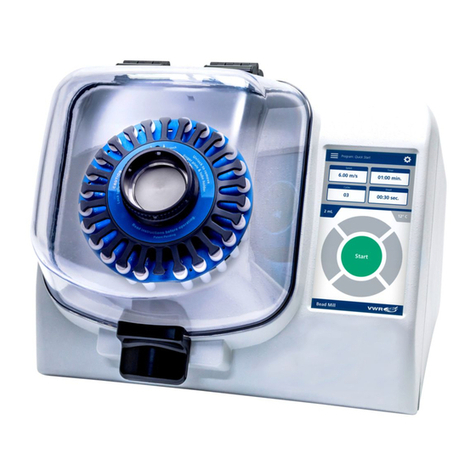
VWR
VWR Bead Mill MAX quick start guide
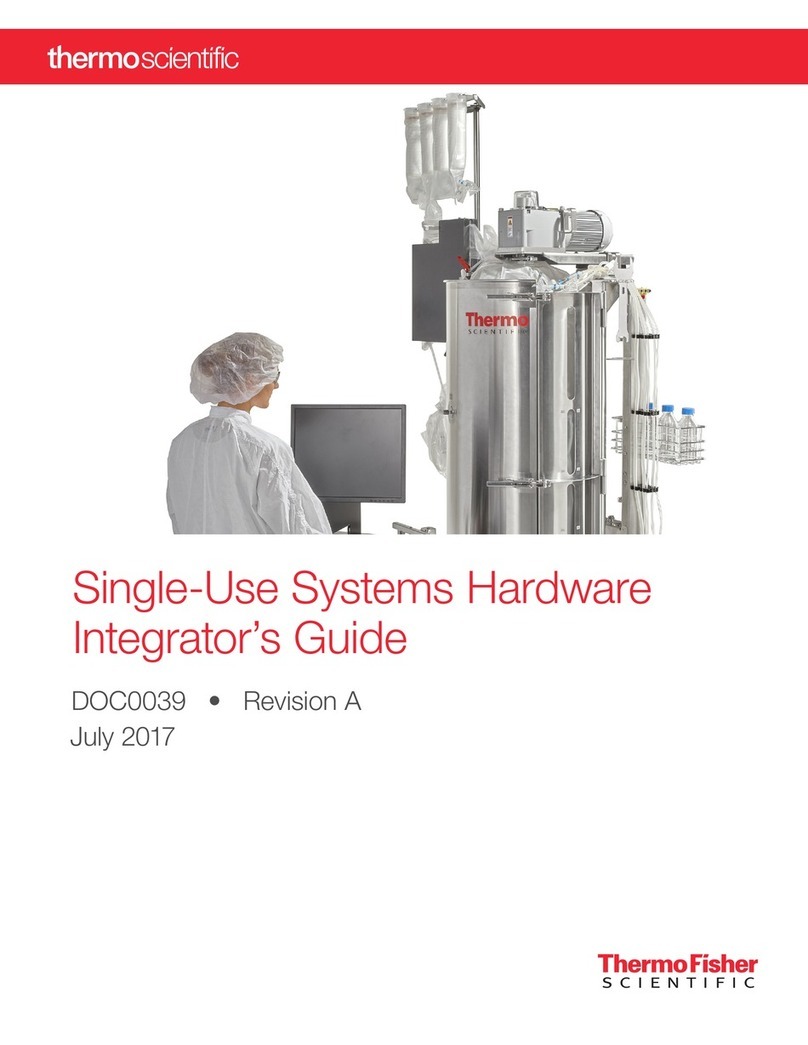
Thermo Scientific
Thermo Scientific HyPerforma 5.1 S.U.B. Hardware Integrator Guide
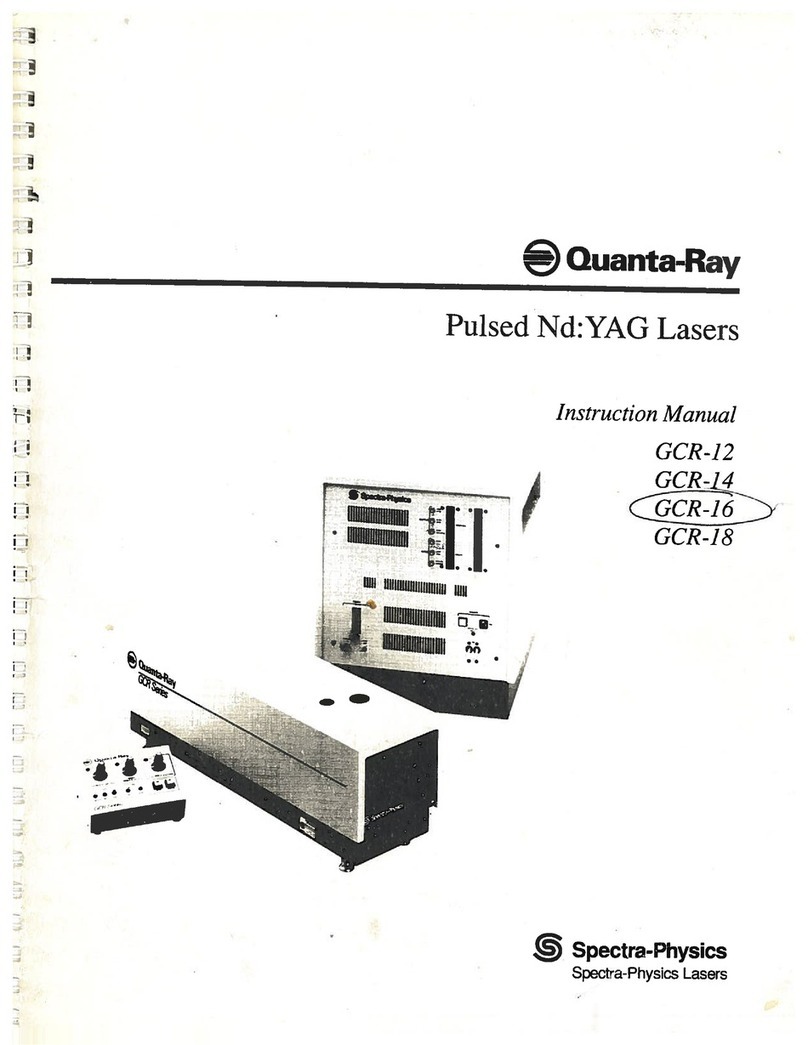
Spectra-Physics
Spectra-Physics Quanta-Ray GCR-16 instruction manual

dental X
dental X DOMINA PLUS B user manual
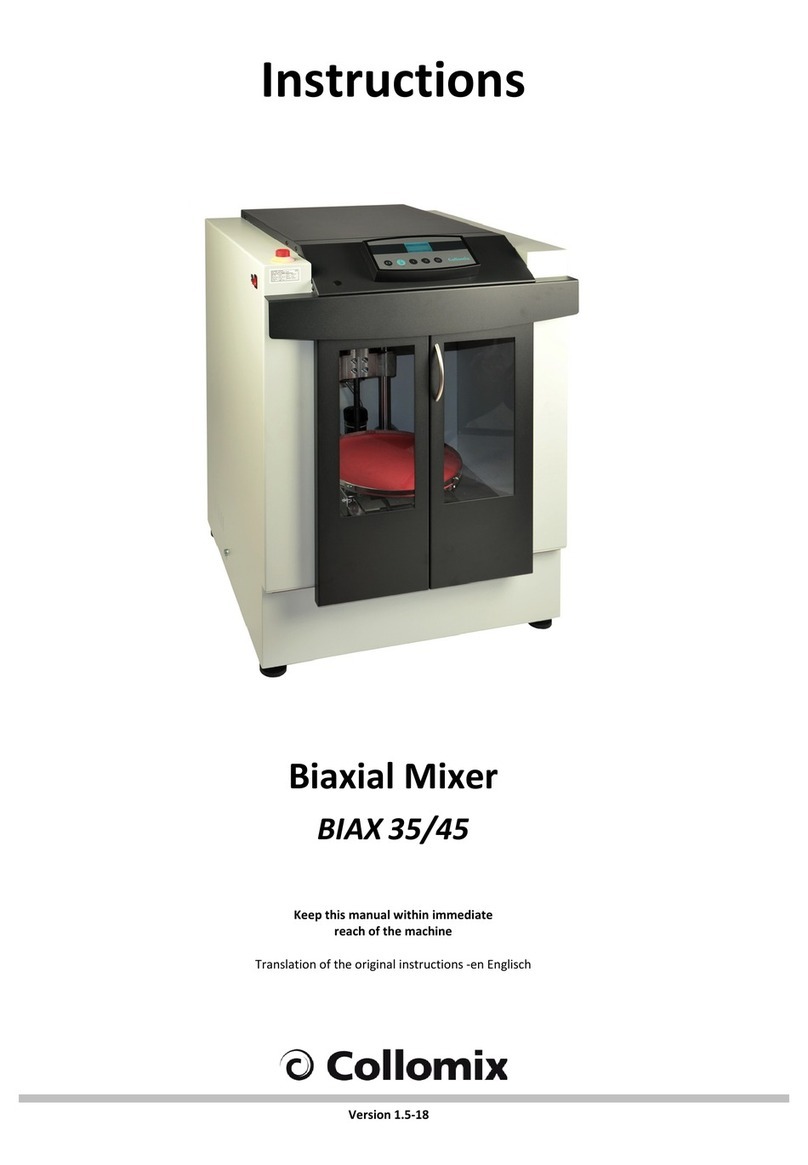
Collomix
Collomix BIAX 35 instructions
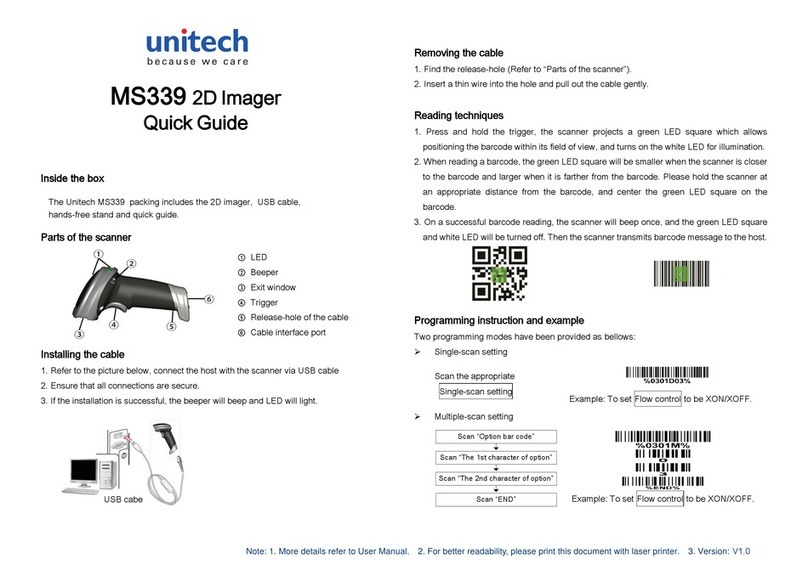
Unitech
Unitech MS339 quick guide

Excelitas Technologies
Excelitas Technologies X-Cite XYLIS XT700 Series user guide
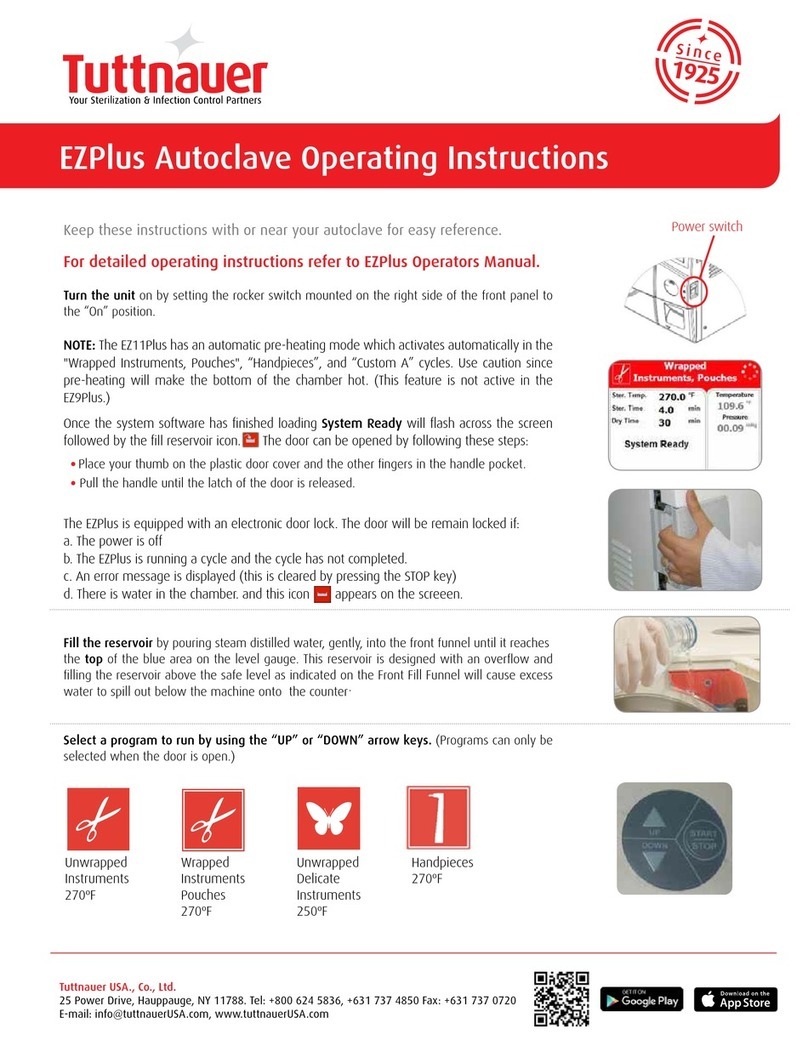
Tuttnauer
Tuttnauer EZPlus Autoclave operating instructions

Fluke
Fluke RUSKA 7750i user manual

Buchi
Buchi Lyovapor L-300 Guide for installation

Peak Scientific
Peak Scientific TOC 1500 user manual
